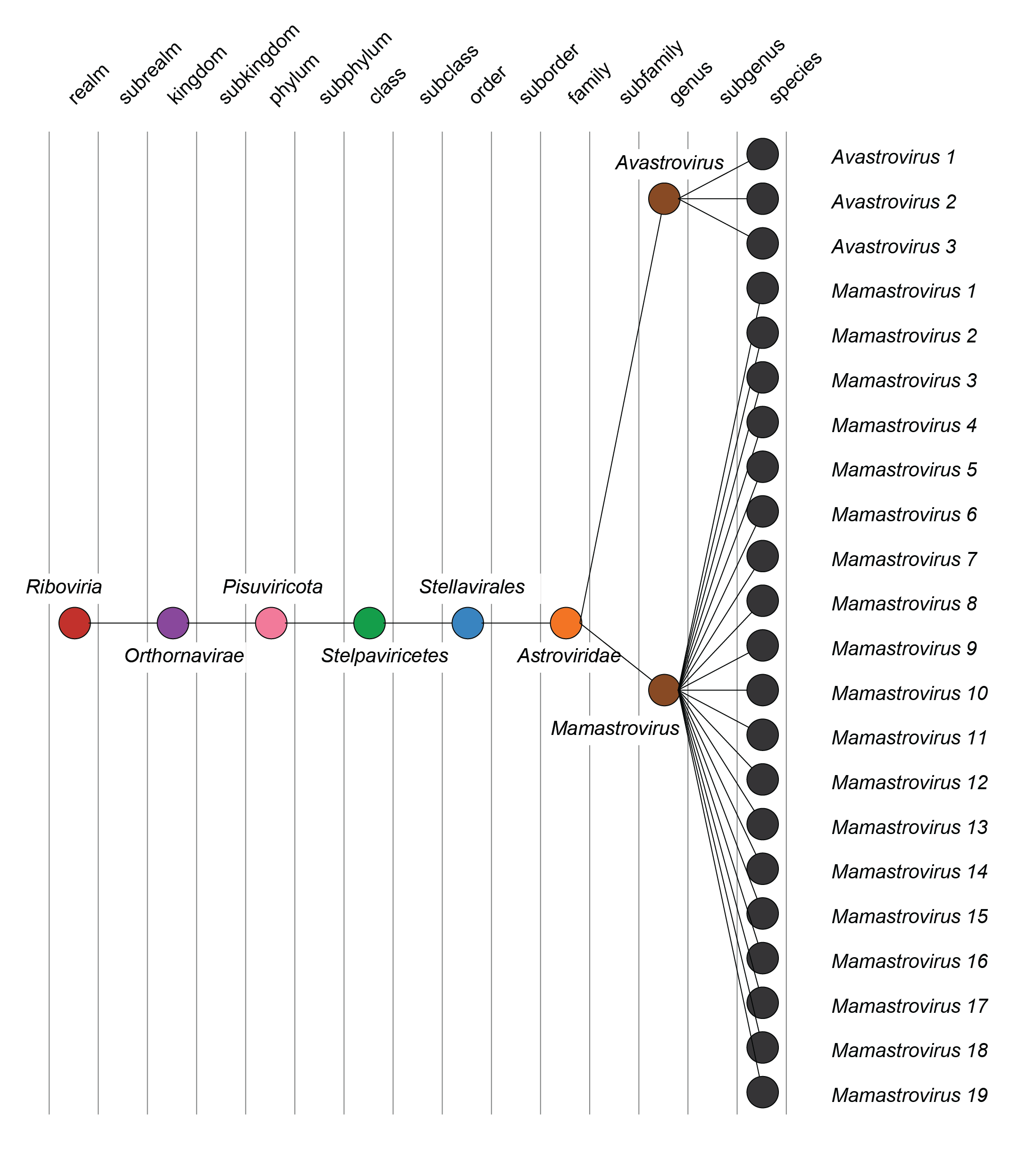Family: Astroviridae (Interim Report)
This is a summary page created by the ICTV Report Editors using information from associated Taxonomic Proposals and the Master Species List.
Edited by: Jens H. Kuhn
Posted: November 2024, updated December 2024
Summary
The family Astroviridae includes ssRNA(+) viruses that infect vertebrates (Table 1 Astroviridae). The family Astroviridae was established in 1995 (Master Species List #14).
Table 1 Astroviridae. Characteristics of members of the family Astroviridae.
| Characteristic | Description |
| Example | mamastrovirus 1 (Z25771), species Mamastrovirus 1, genus Mamastrovirus |
| Virion | Spherical, non-enveloped, 28-30 nm in diameter with surface spikes (Figure 1 Astroviridae) |
| Genome | VpG-linked, positive-sense RNA of 6.4–7.7 kb terminating with poly A (Figure 2 Astroviridae) |
| Replication | Cytoplasmic in virus factories derived from the endoplasmic reticulum |
| Translation | From genomic RNA with frame-shifting for expression of the RNA-directed RNA polymerase. Subgenomic mRNA encodes capsid precursor protein |
| Host range | Birds (Avastroviridae) or mammals (Mamastroviridae) |
| Taxonomy | Realm Riboviria, kingdom Orthornavirae, phylum Pisuviricota, class Stelpaviricetes, order Stellavirales: 2 genera and 22 species (Figure 3 Astroviridae) |
 |
| Figure 1 Astroviridae. (Left) Electron micrograph of human astrovirus particles. Image from Wikipedia under a Creative Commons Attribution 4.0 International License. (Right) Schematic of virions. Image from ViralZone, under a Creative Commons Attribution 4.0 International License, credit: SwissBioPics. |
 |
| Figure 2 Astroviridae. Genome organisation of mamastrovirus 1, a member of the family Astroviridae. Boxes indicate open reading frames as annotated on GenBank accession Z25771. |
 |
| Figure 3 Astroviridae. Relationships of the taxa connected to the family Astroviridae. |
Derivation of names
Astroviridae: from the Greek astron, meaning “star”, representing the star-like surface structure on virions.
Avastrovirus: from the Latin avis, meaning “bird”, representing avian host species and astrovirus.
Mamastrovirus: from the Latin mamma, meaning “breast”, representing mammalian host species and astrovirus.

